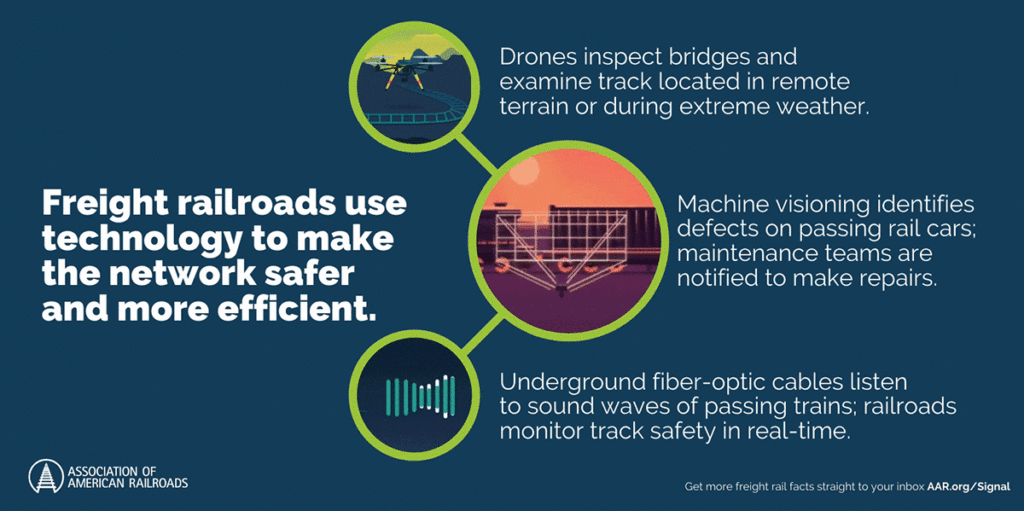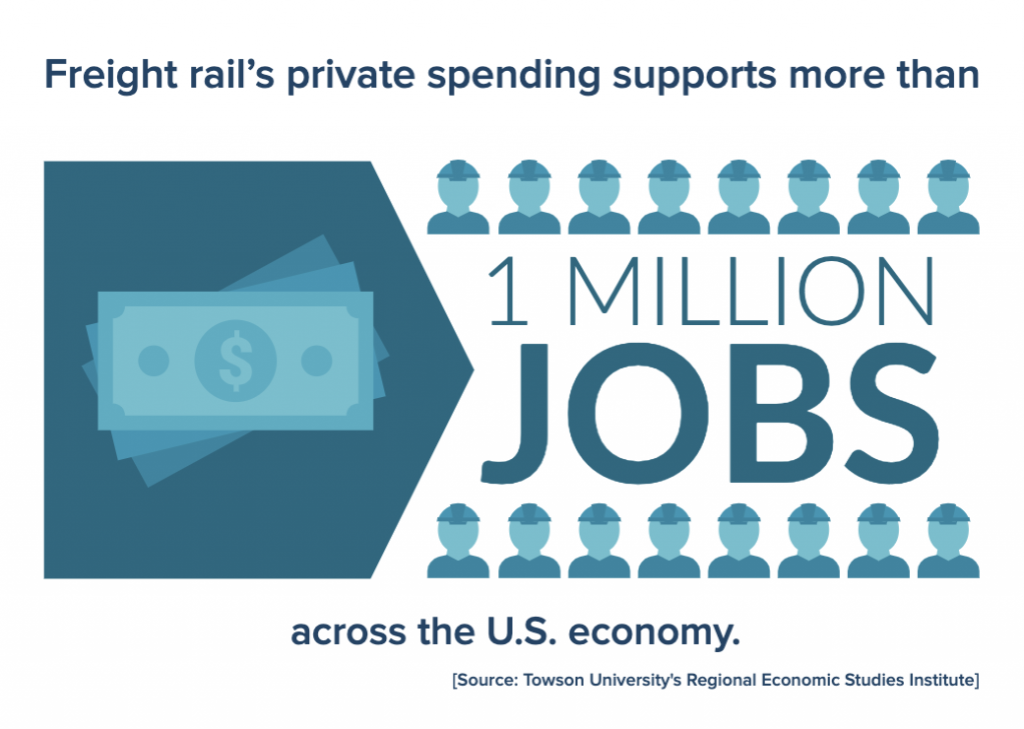Washington, DC — In the spirit of Halloween, we decided to compile a few spook-tacular facts about America’s freight railroads.
1). The rails have hidden eyes and ears.
Sounds spooky right? But these eyes and ears are there to detect the tiny flaws — imperceptible to the human eye — that can lead to accidents. The “eyes” of rail, smart sensors, ultrasound and other advanced tech, are able to look deep inside a track. Ground-penetrating electromagnetic radar, for example, helps railroads get a more complete picture of the health of ballast and detect any abnormalities, like water intrusion, which can cause erosion.
Rail’s “ears” are also listening. Trackside acoustic detector systems can track the energy that is transmitted from a train through the track and into the ground below — i.e. the track’s “acoustic signature.” By studying the acoustic signatures of healthy, broken and deteriorating tracks in a controlled setting, researchers are hoping to monitor tracks nationwide and detect flaws in real-time, preventing accidents before they happen.

2). Freight railroads spend more on maintenance and expansion each year than most state departments of transportation spend on highways.
America’s freight railroads finance their own infrastructure maintenance and expansion — to the tune of about $25 billion annually over the last several years. This amounts to about 40 cents of every revenue dollar, and correlates with steady safety, efficiency and reliability gains.
In contrast — gather ’round for the scariest tale of all — the Highway Trust Fund (HTF) will be depleted by 2021, according to the Congressional Budget Office. While the HTF needs about $170 billion every year to improve roads, its gas-tax funding mechanism cannot keep up. That’s why railroads have advocated for a more sustainable solution that expands on the idea of a “user-pay” system. A Vehicle Miles Traveled (VMT) tax, one that charges drivers and truckers for the distance they drive, is a more sustainable funding model that accounts for changing fuel prices and more fuel-efficient vehicles

3). Trains are eerily efficient — four times more efficient than trucks.
Picture a forest (haunted or not) of 400 million trees that reduces greenhouse gases by about 17 million tons annually. That’s the same outcome you would get — a 17-million ton reduction in greenhouse gases — if just 10% of the freight that moves by big trucks moved instead by rail. Rail’s enviro credentials are frighteningly fantastic, from being able to move one ton of freight over 480 miles per gallon of fuel to accounting for less than 2% of all the emissions from transportation-related sources.

4). U.S. railroads support some 1.1 million jobs across the country.
This last fact is less spooky than it is impressive! According to researchers, every one of the 135, 000 rail jobs supports nearly 8 other jobs across the U.S. economy—nearly 1.1 million jobs in total. Class I railroad workers, 82% of which are unionized, on average receive compensation of $130,000 per year, among the highest of any major U.S. industry. Railroads are also committed to veteran hiring — nearly 20% of current employees are veterans.

Updated 10/25/21.


